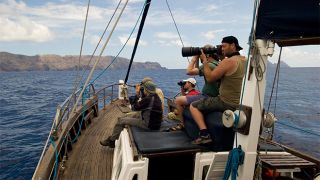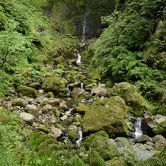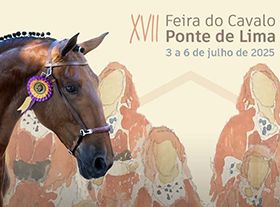Rare species in Madeira

Madeira, Desertas, Selvagens and Porto Santo are the names of islands that all pertain to the same archipelago, but have distinct characteristics. Come and discover their unique native species and fascinating differences.
In Madeira, a large proportion of the luxuriant vegetation is formed by Laurissilva forest, which exists in a unique state of conservation and extension in the island - listed by UNESCO as a world heritage zone. Stroll along the nature trails and the “levada” irrigation channels and prepare to be amazed by this unique landscape, which first enchanted Portuguese navigators when they arrived here in the 15th century.
Take a good look at the birds. Some of them can’t be seen in any other part of the world, such as the long-toed wood pigeon, Madeira Firecrest or Zino’s Petrel, which build their nests in the mountains next to the Pico do Areeiro. To the West - in the Ponta do Pargo - it’s possible to see saffron finches, kestrels and many marine birds such as the Cory’s Shearwater and storm petrels. In the far Eastern section of the island, Ponta de São Lourenço is the meeting place for terns and sea swallows. This long and narrow peninsular, that is home to several endemic plants, offers breathtaking views over Madeira. Don’t forget to bring your camera!
Flanked by steep, almost inaccessible slopes, the Ilhas Desertas (Deserted Islands) are the last Atlantic refuge of the monk seal, the rarest seal species in the world.In order to observe it, go on a boat trip where you’ll perhaps also have the chance to see a Fea’s Petrel or a Canarian pipit, two of the region’s most characteristic bird species.
The Ilhas Selvagens (Savage Islands) are also uninhabited and considered to constitute an ornithological sanctuary. The tranquillity of these islands offers ideal conditions for the establishment of colonies of various species of marine birds, including thousands of pairs of Cory’s Shearwaters and storm petrels.
Perfect for some seaside holidays, Porto Santo has a warm dry climate. The vegetation is less abundant and attracts birds which can’t be seen in the rest of the archipelago. If you want to observe them, travel west and ascend the mountainous zones near to the Pico de Ana Ferreira or the Cabeço das Flores. From here you’ll have unforgettable views over the island, which is famous for its 9 km long sandy beach that is considered to be unique due to its therapeutic properties.





 Explore
Explore 
 Remember and Share
Remember and Share 


